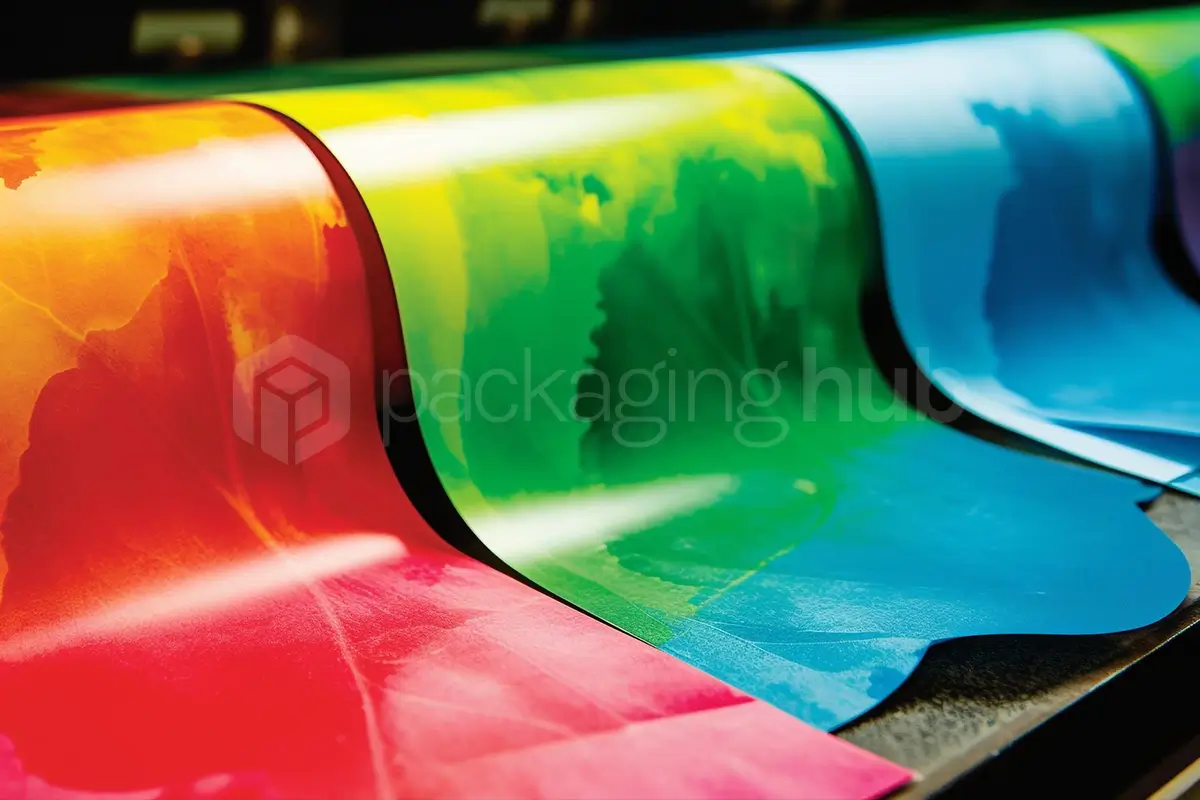Home » Blog » What Is Lithographic Printing And Its Types
What Is Lithographic Printing And Its Types
Posted October 20, 2023

Last Updated on February 25, 2025 by
Now, if you are in the packaging business, you must also understand the importance of printing. Every business that has to do well with physical products needs packaging, and so is the case with printing.
Using lithographic painting is one of the oldest methods to prepare your products for sale. This blog will explain this printing method and why it is essential.
At the same time, we will try to cover all of its types with its comparison to other types of packaging. So, let’s start this!
What Is Lithographic Printing And Why It Matters?
When it comes to lithography, it is one of the simplest methods to do printing in a high-quality manner. Using oil and water is one of the most essential ways you create with this printing method. Some of the top lithography printing examples include magazines, packaging, and even newspapers.
This process can be considered as the lithographic printing definition.
What is the Process of This Method?
The process of this method involves the use of the following:
- Plate preparation
- Image Transfer
- Inc application
- Transfer to the printing surface
- Printing process
Benefits of Lithography Printing
This method is famous for its abilities that other printing processes may not offer, such as:
- It provides versatility with the ability to print cardboard, plastic, metal, and other materials
- At the same time, you can produce a larger spectrum of products with this method.
- Its use is also perfect if you are looking for consistent quality, and it works for branding perfectly.
- Its ability to provide color matching makes it ideal for avoiding any issues with professional packaging jobs.
Special Effects it can Offer:
- Spot Varnish
- Soft Touch or Velvet Lamination
- Textured Finishes
- Glow-in-the-Dark Ink
- Embossing
- Debossing
- Glitter and Sparkle Effects
- Hidden Messages or Watermarks
- Fluorescent Inks
- Pearlescent
- Matte and Gloss
- Foil Stamping
- Metallic Inks
- UV Coating
- Thermochromic Ink
- Scratch and Sniff
- Metallic and Holographic Paper
Process Of Lithographic Printing
The process of lithography is quite simple and takes only a few steps. Here is what you need to know about this process as a printing business:
Plate Preparation
- It starts with plate preparation, created with aluminum or another metal.
- The chemical treatment process starts, creating images and blank areas.
- The last step of this process uses a photosensitive step, which allows the print transfer on the plate.
Ink Application
- In this step, the ink roller system is applied ink to some regions of the plate. The areas it covers are the image areas of the plate.
- On the other hand, the known image areas use water, so the ink does not add anything over there.
Transfer Process
- In the transfer process, the ink plate is pressed on the printing material and does not contact the blanket cylinder.
- Then, the rubber blanket slender gets the ink from the prepared plate, then the rubber blanket cylinder receives the ink from the container and gives the texture of the printing material.
The Printing Process
- In this process, the printing material is fed to the blanket cylinder.
- When the paper passes through this gap, it comes into contact with a rubber blanket cylinder.
- The rubber blanket cylinder’s ink is transferred onto the paper during this event, creating the final printing image.
The repetition of this process allows you to get printed paper for each paper you use.
Types Of Lithographic Printing
When it comes to the types of this method of printing, here is a list of them.
- Sheet-Fed Lithography
- Web Offset Lithography
- Digital Offset Lithography
- UV Lithography
- Waterless Lithography
- Offset Gravure
- Rotary Offset Lithography
- Computer-to-Plate (CTP) Lithography
- Variable Data Lithography
In the next section, we will discuss one of the most common types of lithographic printing with pros and cons.
Sheet-Fed Lithography
When we talk about sheet metal lithography, it is one of the most common types used in printing. Here are some pros of this method:
- This lithographic process allows you high quality with vibrant colors and sharp details.
- At the same time, it is pretty versatile, which works for emphasis materials and printing applications and needs.
- It’s used to allow you quick setup, and it changes, making things more cost-effective.
- At the same time, it is perfect for a smaller number of printing products.
- This method also gives you a reasonable control of color accuracy with perfection in color matching.
Web Offset Lithography
Now, web offset lithography is another one of the most famous methods in this type of printing. Here are some pros of this method:
- When it comes to high-speed production, it is one of the best methods.
- At the same time, it can reduce paper waste during production. This also means that you can cut down the costs during the production process.
- This fact also makes it perfect for long runs and mass production of printing products.
- It also helps you eliminate additional production processes like folding, cutting, etc.
- This method is also famous for being highly productive as it is automated in most of the process.
Digital Offset Lithography
Digital offset lithography printing has its benefits, such as:
- It is one of the methods that can provide you with a quick turnaround, making things work faster.
- Like other types of lithographic printing, it also allows you to print variable jobs.
- It is also cost-effective for short-run jobs, so it has one of its unique pros that other types may not have.
- Also, it provides you with better resource management by reducing waste.
- This also means that it eliminates the different costs of this waste.
UV Lithography
Now, the pros of UV lithography can be different in comparison to other types, like:
- This method allows you to dry your printed material instantly, eliminating the need for drawing time.
- At the same time, if you’re looking for vibrant and growing glossy finishes, it can also do that.
- Also, if you are looking for sharp details in your printing, it is one of the best methods.
Packaging Hub At Your Service
If you’re looking for any type of commercial printing process for your products, Packaging Hub can help. We deal in an extensive spectrum of printing services with a significant focus on quality. If you’re looking for lithographic printing services, we can help you get the best results you can imagine.
Contact our customer sales representatives, and you can make your product printing super professional with commercial lithographic printing.
FAQs
What is the difference between lithography vs intaglio?
The main differences between the two are based on the process they follow and the equipment used. For instance, intaglio printing uses a metal plate. At the same time, if the ink is wiped from the surface. Moreover, lithographic printing relies on oil and water repulsion methods.
What is the difference between lithography and etching printing?
In the etched method, there is the use of a metal plate in which you also use acid for the printing process. When it comes to the appearance of the print, it creates distinct and precise lines that also offer a velvety appearance. On the other hand, lithography may work better for artistic and commercial printing in comparison.
How can we compare lithography vs digital printing?
The digital method uses ink on the printing service with the help of digital data. On the other hand, lithography uses oil and water, the repulsion method for printing. Also, the lithography method has a longer setup time owing to plate preparation and adjustments.
What is digital lithography printing?
Regarding digital lithography, the image is transferred from a digital file onto the printing plate. This way, the process does not need any film or photochemical processes. On the other hand, digital offset lithography also uses ink rollers to apply ink on the plates.
How do we differentiate lithography vs offset printing?
When it comes to offset printing, it works for both cylindrical and smooth surfaces. When it comes to the process in offset, it comes from the rubber blanket to the material. On the other hand, lithography uses a photochemical process for image creation.

